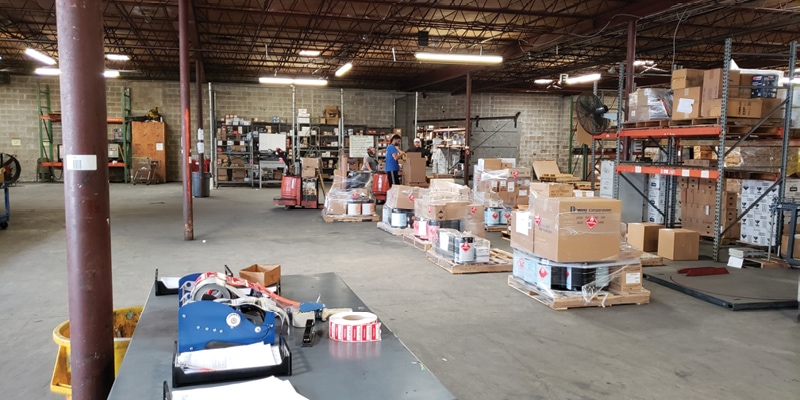Articles
Supply Chain Visibility

Tackling Tariffs and Trade Headaches: How to Overcome Supply Chain Visibility Gaps and Global Barriers
Supply chain and logistics managers face global trade barriers and geopolitical risk and uncertainty. Here’s how to handle tariffs and prepare for supply chain disruptions.
Read More
How Procurement Can Prepare for the Inevitable, Sustainable Future
To meet sustainability initiatives, chief procurement officers must untangle a complex web of global supply chains, dizzying individual country standards, and more. Here are the four major challenges and how they can tackle them:
Read More
How Does Integrated Business Planning (IBP) Drive Supply Chain Efficiency?
6 ways that Integrated Business Planning (IBP) improves supply chain efficiency.
Read More
Supply Chain Resilience: Overcoming the Obstacles
Organizations draw on resilience planning and impactful technology for the strength to resist the challenges of lengthy supply chains and ongoing disruptions.
Read More
How to Navigate Your Supply Chain During Market Swings
Market conditions play a crucial role in shaping challenges professionals face when managing their organization’s supply chains. While bear markets are known for their economic uncertainty and declining stock prices, bull markets are characterized by investor optimism and rising asset values. Both markets present unique hurdles that supply chain professionals must adeptly navigate.
Read More
10 Tips for Selecting LTL Service Levels
In an unpredictable and evolving global supply chain, it is vital to have a trustworthy LTL carrier strategy that adds consistency to your operations. It is essential to select carriers that are aligned on your priorities and can be most beneficial to your business.
Read More
How Shippers Are Taking Control of Supply Chain Management
Analytics solutions offer visibility into past, present, and future spot and contract market rates, enabling strategic sourcing, planning, and cost management.
Read More
Powering Up a Better Supply Chain
At Aggreko, the focus is to ensure that business is always on by delivering power, cooling, and heating equipment and services anywhere they’re needed so businesses can grow and communities can thrive. The company operates in high-stakes environments to deliver emergency solutions to customers including utilities, municipalities, petrochemical companies, refineries, and manufacturing firms.
Read More
Boosting Supply Chain Visibility
Supply chain visibility enables companies to respond quickly to changes in customer demands, optimize production and distribution, deliver a superior customer experience, and gain a competitive edge. Here’s how to achieve it.
Read More
Supply Chain Visibility: What It Is, Importance, and Types
Supply chain visibility is a process that provides customers with information regarding a product or service they ordered. By informing customers of the timeframe and details about a specific product they ordered from a business, the corporation can monitor orders, increase its daily operation efficiency, and avoid customer dissatisfaction. That is just one value of […]
Read More
Optimize Your Supply Chain Balance Sheet
Every supply chain contains both hidden costs and potential savings. Smart shippers and their logistics partners utilize their data to discover cost-saving opportunities that improve profitability.
Read More
Providing Inbound Freight Visibility and Enhancing Savings
When a client grappled with vendors that incurred excess freight charges, ARTC Logistics implemented a system that brought visibility and streamlined the inbound shipment process.
Read More
10 Tips: Optimizing Mobile Devices in Your Supply Chain
Mobile devices are indispensable tools for businesses to stay connected and manage their supply chains—placing them on the front lines of technology transformation. Here are 10 action items to better optimize the use of mobile devices in your supply chain.
Read More
Many Supply Chains Still in the Dark
Although technology innovations help shed light on additional insights into supply chains, some knowledge gaps remain. Up to 80% of executives responding to Verusen’s 2022 State of Supply Chain Management report say they can’t digitally track the movement of direct and indirect materials across their enterprise, which suggests that many companies may lack the technology […]
Read More
3 Ways Digital Transformation Enhances Capacity
After consecutive pandemic years, supply chains are a mess. As a result, businesses are running out of stock just as surging consumer demand drives up prices for remaining goods, contributing to record inflation and further disrupting consumer markets.
Read More
Gaining Better Visibility: Where to Start
While the business-to-consumer (B2C) market has embraced sophisticated technology tools to enable a digital transformation across the supply chain, the business-to-business (B2B) industry has been slower to adapt, steadfast in a reliance on spreadsheets, phone calls and email.
Read More
AI and ML in Retail: Help or Hype?
Top-performing retailers are bullish on artificial intelligence (AI) and machine learning (ML), with 71% of respondents to a Retail Systems Research report saying AI-enabled analytics will fundamentally change their merchandising forecasting by 2025.
Read More
How to Develop a Customer-centric Supply Chain
Supply chain variability creates hurdles to customer satisfaction. Prioritize the consumer experience by integrating flexible technologies and processes in your supply chain design.
Read MoreIN BRIEF: New Services and Solutions
Products ORBIS introduced its Automated Reusable Optimized Solutions (AROS) product line designed for integration into automated systems to facilitate the transfer, storage, and organization of merchandise. Launching as part of the AROS line is the ML6545-325 (pictured), a handheld container which offers a large cubic density and can interface with high-speed systems. Dividers can be […]
Read More
Shifting Gears to Drive Improvement
National Oak Distributors, an automotive paint, body, and equipment warehouse distributing company founded in 1995, reaches more than 95% of the country with next-day delivery. Because timeliness lies at the heart of its business model, supply chain visibility and accurate reporting are key. THE CUSTOMER National Oak Distributors is an automotive paint, body, and equipment […]
Read More